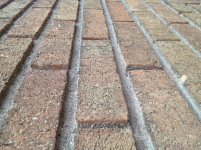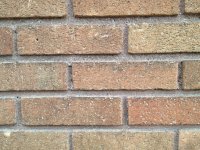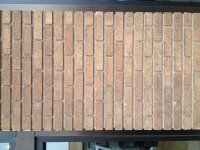JBurd
New member
This is from an 80+ year old building a friend of mine owns. I did some testing and nothing I tried (2500psi, roof wash (sh plus detergent), acid, two-stepping) did much of anything to the grime. I tried some higher pressure (3200psi green tip) and at first I thought it was working but on closer examination i think it altered the texture (ie stripped off some brick). Can anyone identify the brick or more importantly, what will clean it up. The grime is most prominent on the top lip of each brick and I thought it was just an organic stain (mildew) but the sh didn't effect it. Another question...the contractor bidding on tuck pointing it wants the power washing done first, but I'd rather have the tuck pointing done first, is there a best order to have those done?





